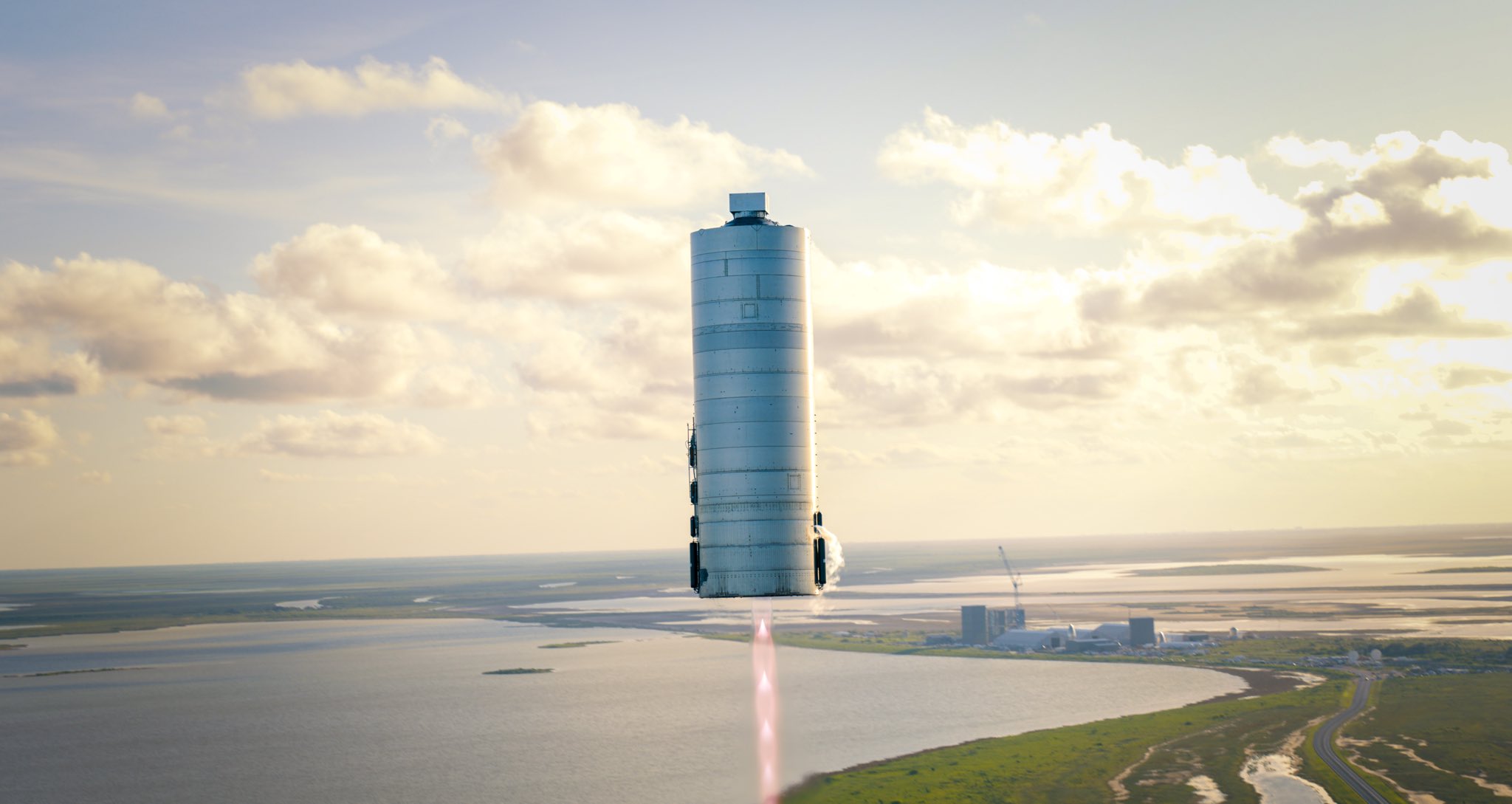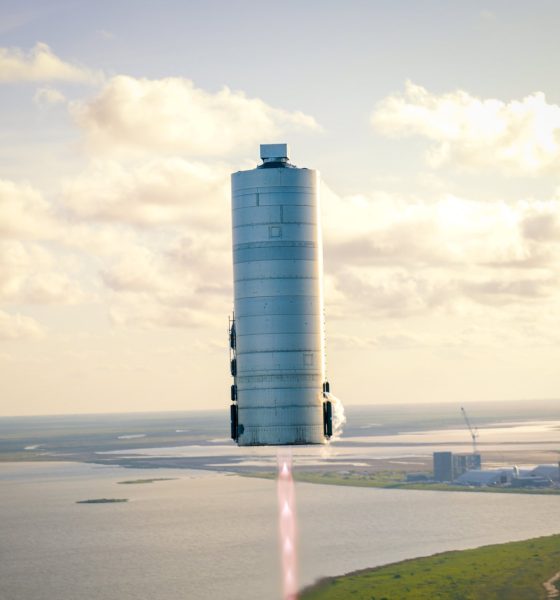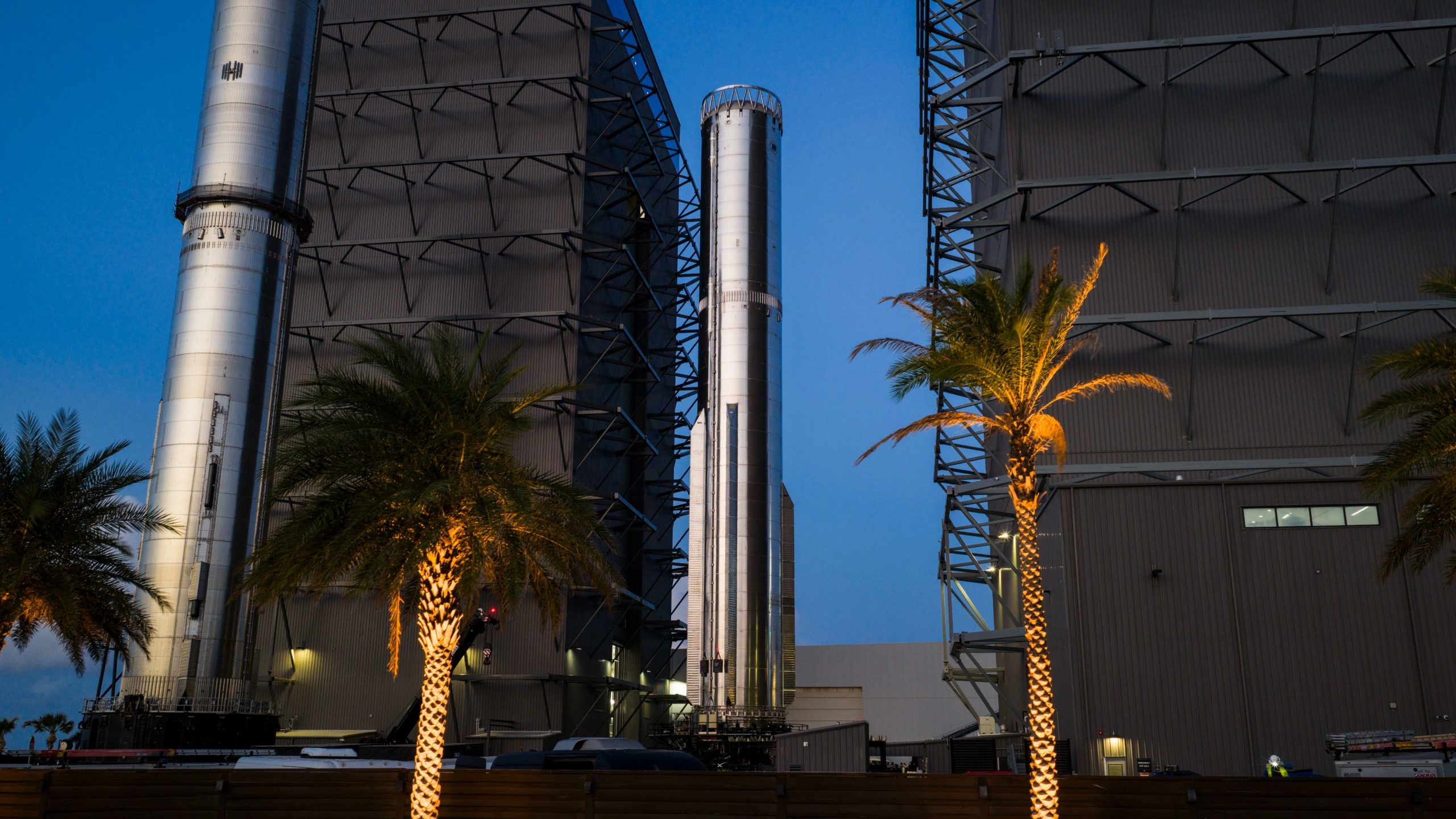

News
SpaceX partners with US military to study using rockets for worldwide cargo delivery
SpaceX has partnered with the U.S. Military to study joint cargo transportation efforts using the private spaceflight company’s Starship rockets. The cooperative research and development agreement (CRADA), also featuring Exploration Architecture Corporation (XArc), is a voluntary effort wherein the participants donate time and resources to help develop “use cases” involving their technology. If successfully completed and the findings implemented, SpaceX’s rockets would deliver emergency military cargo anywhere in the world in under an hour.
“As industry advances to overcome these challenges and decrease costs, a space transportation capability to put a crucial cargo quickly on target at considerable distances makes it an attractive alternative,” remarked Vice Admiral Dee Mewbourne, the U.S. Transportation Command (TRANSCOM) Deputy Commander, as reported by SpaceNews. “I had no sense for how fast SpaceX was moving, but I’ve received their update and I can tell you they are moving very rapidly in this area,” explained General Stephen Lyons, Commander of TRANSCOM. “Think about moving the equivalent of a C-17 payload anywhere on the globe in less than an hour.”
The joint study was announced at the National Defense Transportation Association’s virtual conference last week.
At the beginning of the COVID-19 pandemic, the US Federal Emergency Management Agency (FEMA) launched “Project Airbridge,” partnering with commercial air cargo companies to bring millions of medical supplies into the country. The effort accelerated supply transport from the conventional 30-40 days shipping time frame to a two-day process via airplanes, and a total of around 250 flights were completed before the project was phased out in June. The recent US Military-SpaceX study would likely include case study solutions for scenarios like Project Airbridge, possibly reducing both the time and flights required to transport the tons of supplies that were needed.
The technology involved in the US Military-SpaceX CRADA was first discussed in detail by SpaceX CEO Elon Musk in 2017 at the International Astronautical Congress. A video concept showed passengers in New York City ferrying to a floating platform where they would board a Starship-class rocket for a 40-minute trip to Shanghai. “So, most of what people consider to be long distance trips would be completed in less than half an hour,” Musk said in the presentation. COO and President Gwynne Shotwell gave a Ted Talk in 2018 further discussing the technology and its implications for future civilian travel.
Using Starship’s eventual point-to-point transportation capabilities in a military capacity were teased at the Association of the U.S. Army’s annual conference 2019. During the event, Shotwell appeared on a panel discussing the service’s efforts to modernize forces by bringing more innovation into their procurement process. “We’re talking to the Army about Starlink and Starship,” the COO revealed in comments to SpaceNews. SpaceX had previously revealed it had discussed the technology with the US Air Force in 2018. This most recent study announcement seems to formalize the parties’ interest in working with one another.

Elon Musk
SpaceX issues statement on Starship V3 Booster 18 anomaly
The incident unfolded during gas-system pressure testing at the company’s Massey facility in Starbase, Texas.

SpaceX has issued an initial statement about Starship Booster 18’s anomaly early Friday. The incident unfolded during gas-system pressure testing at the company’s Massey facility in Starbase, Texas.
SpaceX’s initial comment
As per SpaceX in a post on its official account on social media platform X, Booster 18 was undergoing gas system pressure tests when the anomaly happened. Despite the nature of the incident, the company emphasized that no propellant was loaded, no engines were installed, and personnel were kept at a safe distance from the booster, resulting in zero injuries.
“Booster 18 suffered an anomaly during gas system pressure testing that we were conducting in advance of structural proof testing. No propellant was on the vehicle, and engines were not yet installed. The teams need time to investigate before we are confident of the cause. No one was injured as we maintain a safe distance for personnel during this type of testing. The site remains clear and we are working plans to safely reenter the site,” SpaceX wrote in its post on X.
Incident and aftermath
Livestream footage from LabPadre showed Booster 18’s lower half crumpling around the liquid oxygen tank area at approximately 4:04 a.m. CT. Subsequent images posted by on-site observers revealed extensive deformation across the booster’s lower structure. Needless to say, spaceflight observers have noted that Booster 18 would likely be a complete loss due to its anomaly.
Booster 18 had rolled out only a day earlier and was one of the first vehicles in the Starship V3 program. The V3 series incorporates structural reinforcements and reliability upgrades intended to prepare Starship for rapid-reuse testing and eventual tower-catch operations. Elon Musk has been optimistic about Starship V3, previously noting on X that the spacecraft might be able to complete initial missions to Mars.
Investor's Corner
Tesla analyst maintains $500 PT, says FSD drives better than humans now
The team also met with Tesla leaders for more than an hour to discuss autonomy, chip development, and upcoming deployment plans.

Tesla (NASDAQ:TSLA) received fresh support from Piper Sandler this week after analysts toured the Fremont Factory and tested the company’s latest Full Self-Driving software. The firm reaffirmed its $500 price target, stating that FSD V14 delivered a notably smooth robotaxi demonstration and may already perform at levels comparable to, if not better than, average human drivers.
The team also met with Tesla leaders for more than an hour to discuss autonomy, chip development, and upcoming deployment plans.
Analysts highlight autonomy progress
During more than 75 minutes of focused discussions, analysts reportedly focused on FSD v14’s updates. Piper Sandler’s team pointed to meaningful strides in perception, object handling, and overall ride smoothness during the robotaxi demo.
The visit also included discussions on updates to Tesla’s in-house chip initiatives, its Optimus program, and the growth of the company’s battery storage business. Analysts noted that Tesla continues refining cost structures and capital expenditure expectations, which are key elements in future margin recovery, as noted in a Yahoo Finance report.
Analyst Alexander Potter noted that “we think FSD is a truly impressive product that is (probably) already better at driving than the average American.” This conclusion was strengthened by what he described as a “flawless robotaxi ride to the hotel.”
Street targets diverge on TSLA
While Piper Sandler stands by its $500 target, it is not the highest estimate on the Street. Wedbush, for one, has a $600 per share price target for TSLA stock.
Other institutions have also weighed in on TSLA stock as of late. HSBC reiterated a Reduce rating with a $131 target, citing a gap between earnings fundamentals and the company’s market value. By contrast, TD Cowen maintained a Buy rating and a $509 target, pointing to strong autonomous driving demonstrations in Austin and the pace of software-driven improvements.
Stifel analysts also lifted their price target for Tesla to $508 per share over the company’s ongoing robotaxi and FSD programs.
Elon Musk
SpaceX Starship Version 3 booster crumples in early testing
Photos of the incident’s aftermath suggest that Booster 18 will likely be retired.

SpaceX’s new Starship first-stage booster, Booster 18, suffered major damage early Friday during its first round of testing in Starbase, Texas, just one day after rolling out of the factory.
Based on videos of the incident, the lower section of the rocket booster appeared to crumple during a pressurization test. Photos of the incident’s aftermath suggest that Booster 18 will likely be retired.
Booster test failure
SpaceX began structural and propellant-system verification tests on Booster 18 Thursday night at the Massey’s Test Site, only a few miles from Starbase’s production facilities, as noted in an Ars Technica report. At 4:04 a.m. CT on Friday, a livestream from LabPadre Space captured the booster’s lower half experiencing a sudden destructive event around its liquid oxygen tank section. Post-incident images, shared on X by @StarshipGazer, showed notable deformation in the booster’s lower structure.
Neither SpaceX nor Elon Musk had commented as of Friday morning, but the vehicle’s condition suggests it is likely a complete loss. This is quite unfortunate, as Booster 18 is already part of the Starship V3 program, which includes design fixes and upgrades intended to improve reliability. While SpaceX maintains a rather rapid Starship production line in Starbase, Booster 18 was generally expected to validate the improvements implemented in the V3 program.
Tight deadlines
SpaceX needs Starship boosters and upper stages to begin demonstrating rapid reuse, tower catches, and early operational Starlink missions over the next two years. More critically, NASA’s Artemis program depends on an on-orbit refueling test in the second half of 2026, a requirement for the vehicle’s expected crewed lunar landing around 2028.
While SpaceX is known for diagnosing failures quickly and returning to testing at unmatched speed, losing the newest-generation booster at the very start of its campaign highlights the immense challenge involved in scaling Starship into a reliable, high-cadence launch system. SpaceX, however, is known for getting things done quickly, so it would not be a surprise if the company manages to figure out what happened to Booster 18 in the near future.








